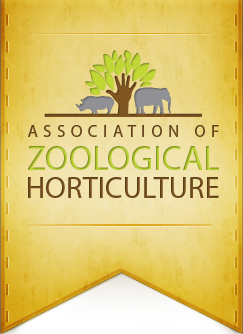2019 AZH Conservation Grant Winners
Creation of biological corridors utiliziing family plots, for the conservation of Abronia campbelli - Oklahoma City Zoo
The Foundation for the Conservation of Endangered species of Guatemala (FUNDESQUA) now in partnership with the Oklahoma City Zoo and International Reptile Conservation Foundation (IRCF), began a long-term conservation program in 2001 called “Conservation Heloderma” and in 2009 “Conservation Abronia”. Both programs incorporate field research, public education, local community capacity building and habitat protection and restoration.
Campbell’s alligator lizard (Abronia campbelli) which is considered the most threatened Abronia species in Guatemala and thus the world. Campbell’s alligator lizard is critically endangered due to the decline in extent and quality of habitat, as a direct result of land-use change for agriculture and livestock. We believe that the most successful conservation programs are voluntary and locally driven, so our project focuses on the intertwining and compatibility of biodiversity protection, with the livelihoods of the local populace; resulting in long-term sustainable conservation.
This projects main goals and objectives are to protect and extend the habitat available for A. campbelli, with the creation of biological corridors utilizing privately owned, small land-holdings (currently used for subsistence agriculture) of 100 families. These corridors will be developed by planting live fences with key forest species. To achieve this goal, we will have community-based activities within the habitat of A. campbelli and in our nursery, to not only develop the technical skills needed by the community but also to develop a new way of interacting with nature that culminates in a culture oriented towards the conservation of biodiversity.
Unlocking the secrets to germinating our more challenging rare species of South Florida’s Pine Rocklands and sharing this information with the conservation community - Fairchild Tropical Botanic Garden
The Pine Rocklands of South Florida are a critically imperiled habitat due to rapid urban expansion. Only 2% of the original habitat remain today outside of Everglades National Park, and it is heavily fragmented. To safeguard genetic diversity and for use in future restoration projects, seeds from a variety of species are regularly collected and stored at the seed lab of Fairchild Tropical Botanic Garden (FTBG). There, we conduct germination trials to assess seed viability, dormancy breaking methods, and the potential for long-term storage of seeds. Additionally, FTBG’s Connect to Protect Network (CTPN) aims to increase the connectivity of this fragmented habitat by distributing plants to private homeowners and public lands. With membership numbers rising, the demand of plants is growing proportionately. CTPN members and FTBG partners increasingly request information about how to best propagate Pine Rockland species.
Goals for this project include:1.) Develop and optimize seed propagation methods for five of the following species (depending on seed availability) to increase production numbers and make them available for CTPN members and the public: Bourreria cassinifolia, Guettarda scabra, Centrosema virginianum, Ipomoea tenuissima, Melanthera parvifolia, Metastelma blodgettii, Dalea carnea, Croton linearis, and Koanophyllon villosum. 2.) Write propagation protocols for at least 20 Pine Rockland plants and a how-to guide explaining the different seed dormancy breaking methods. Both will be made publicly available, particularly for AZH and CTPN members. 3.) Compile seed storage behavior information based on data from the seed lab of FTBG and make it available for other institutions.
Expand capacity and programming for Florida Mangrove Conservation – The Florida Aquarium
Since 2016, we have provided around about 2000 established Red Mangrove seedlings to environmental conservation efforts and shared them with other AZH and AZA membership institutions. Our goal now is to expand our efforts and provide White and Black Mangrove seedlings.
Mangroves are a keystone species for ocean shorelines. They are vital to our ecosystem by providing habitat at every level; from fish nurseries and shoreline erosion control with their root system, midlevel habitat to crabs, snails, and even the mangrove snake, and their canopy providing nesting for many species of shoreline birds and many significances beyond this.
Staff will collect seed from established mangroves near our Aquarium property in areas that we provide volunteer clean-up efforts to then grow in seed trays and or / purchase started White and Black Mangrove seedlings from Sandhill Growers to grow out further to a size suitable for transplanting in to the environment. We will raise them in our Aquarium nursery and then transport them to restoration events where we will also provide the volunteer labor to plant them.
Ex-situ conservation of four ‘new’ and unprotected plant species at Parc Ivoloina - Naples Zoo/Madagascar Flora and Fauna Group
The purpose is to prevent the extinction of four newly discovered Malagasy plants and conserve them ex-situ as 100 growing plants in Parc Ivoloina. These species are currently known only from small, unprotected forest fragments that are likely to be destroyed in the next decade. The four are a species of Polyscias (Araliaceae), Astrocassine (Celastraceae), Rhopalocarpus (Sphaerosepalaceae), and Vitex (Lamiaceae). Chris Birkinshaw, Missouri Botanical Garden’s technical advisor in Madagascar, will lead the work. He has a Doctorate in tropical ecology, is based full-time in Madagascar where he has worked for MBG since 1996.
Project activities include: Apply for permits to collect vouchered seed samples, field trips to relocate and flag individuals and to train local assistants to monitor and collect ripe seeds, local assistants track phenology of target species, collect ripe seeds when they occur, and dispatch seed samples to Parc Ivoloina, propagation of seeds at Parc Ivoloina, label seedlings and plant out into Parc Ivoloina at locations where they can grow to maturity. Some plants will be planted in association with the captive lemur collections and here they will be provided with an interpretive sign, nurture and monitor plants and ultimately use in forest restoration endeavors.

